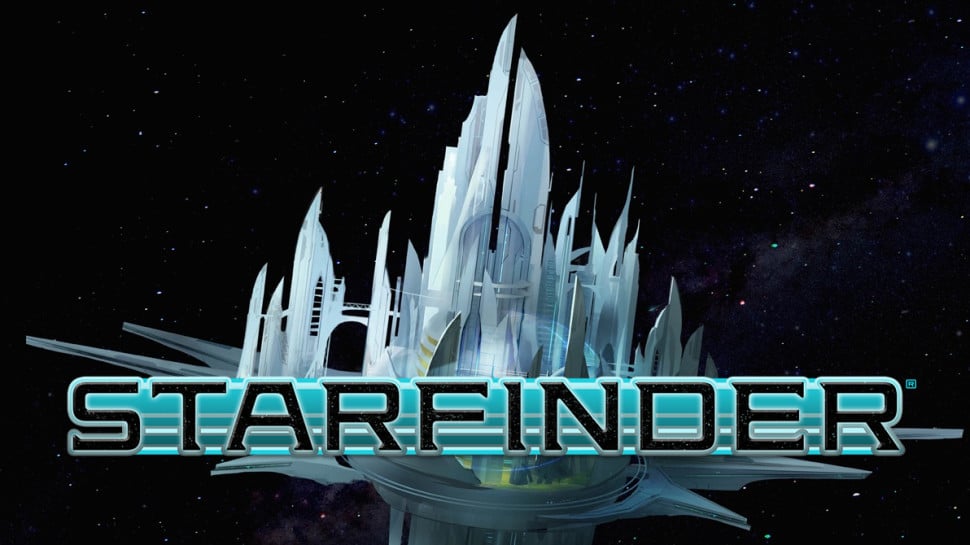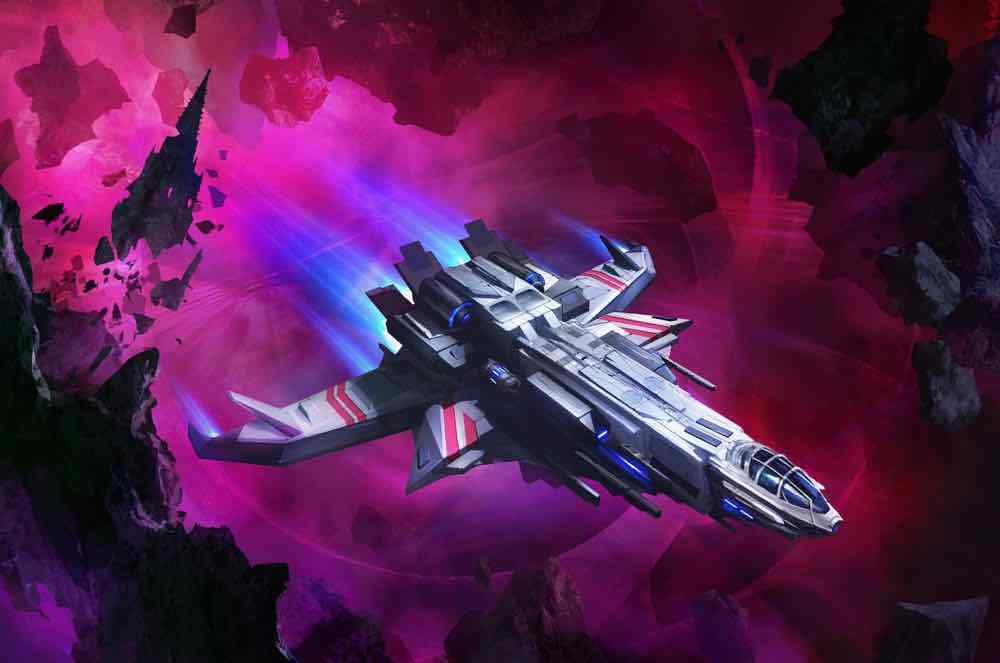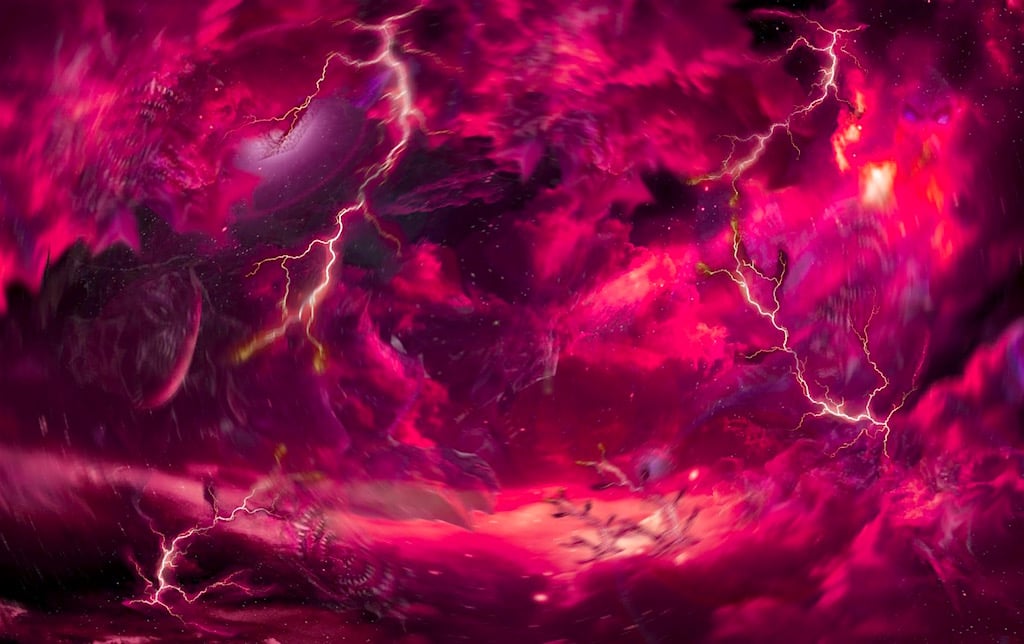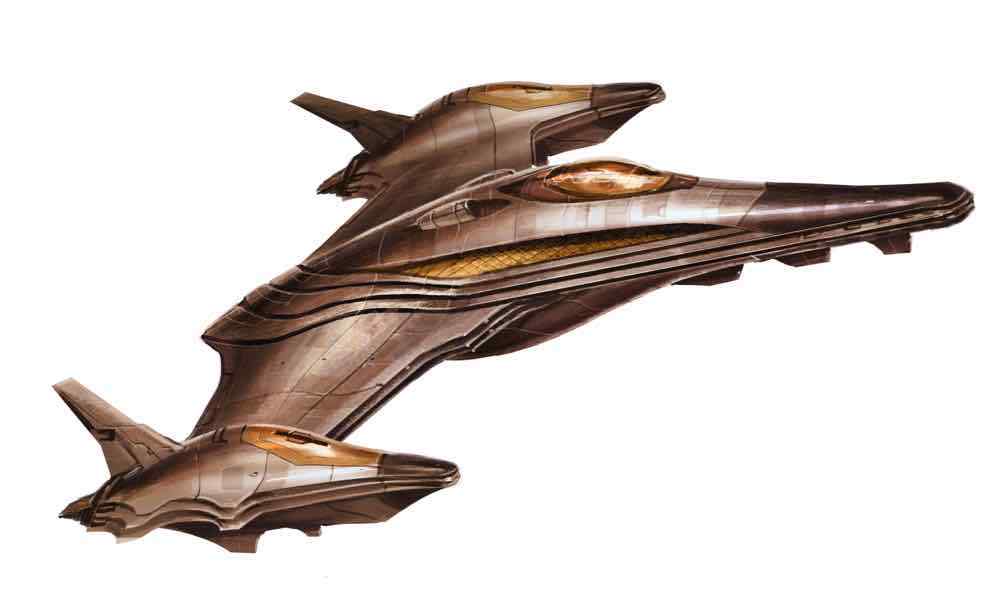Starfinder: Drift Between the Stars

Take a look at the Drift: the extraplanar key to FTL travel in Starfinder.
Faster than light travel is an essential part of any Science Fantasy setting that’s spread out between the Stars. And in a setting like Starfinder, it’s especially important–it’s what connects the various worlds and factions and helps adventurers find new worlds to plunder loot adventure on. The folks over at GeekDad have a look at the extraplanar realm that handles FTL etc. in Starfinder. So strap in to your safety harness, empty your minds, and get ready to go fast and furious as we enter the Drift.
via GeekDad
Now in Starfinder, FTL travel was a gift to the Pact Worlds (and specifically the Golarion system) from an ascendant AI/Deity comprising three high-tech deities: the god of androids, the clockwork goddess, and the machine-built god, calling itself Triune. And one of Triune’s first acts was to give mortals access to the Drift–a hyperspace realm that’s technically an extraplanar dimension but you can only reach it through technology. Specifically you can only reach it through via a Drift engine–and while inside the Drift you cross through the realm and exit into a different point in real space.
Ships can get lost within it, there are wrecks and other hazards–even monsters and gods lurk therein, which might make you scream out ‘The Warp’ and you’d not be wrong–but there’s also shades of Hyperspace from the Chanur novels by CJ Cherryh and any other space opera that features Hyperspace as a dangerous place.
Using Drift technology differs from ordinary astrogation in that the distances between worlds are less important than the difficulty of correctly targeting the jump. Within a given solar system, jumps are relatively quick and easy, though this method is only moderately faster than flying between worlds using conventional thrusters. Outside of a given system, Drift tech divides the galaxy into two sectors: Near Space and the Vast. While Near Space worlds tend to be closer to the galactic center (and, incidentally, to the Pact Worlds) and the systems of the Vast tend to be farther out, the true difference between the regions lies in the density of so-called “Drift beacons.” These mysterious objects, sometimes spontaneously generated and sometimes placed by priests of Triune, help navigation systems orient ships in the Drift. While placing a single Drift beacon on a world isn’t enough to convert a Vast world to Near Space status, placing many in that general region of space can cause the shift, and thus it’s possible to find pockets of Near Space worlds all the way out to the galactic rim, as well as uncharted zones considered part of the Vast near the galaxy’s core.
When traveling to a world through the Drift, determine whether the destination is in the same system, Near Space, or the Vast. The distance between the start and end of your journey doesn’t matter, nor which category of space you’re starting from: traveling from the Vast to a Near Space world is no more difficult than between two Near Space worlds. Roll using the travel times below, then divide the result by your starship’s Drift engine rating to determine how long it takes you to reach your destination. For example, a starship with a Drift engine rating of 2 traveling to a world in the Vast would roll 5d6 and divide the result by 2. If you rolled 15, then the trip would take 7-1/2 days. Note that you never round down with Drift travel rolls, since these partial days can be extremely important when multiple spacecraft are racing each other to a destination. Additionally, since the Drift is a plane that you’re traveling through, it is possible to pause midjump, and even to land on one of the floating chunks of terrain within it or engage in starship combat. Time spent stopped in this manner does not bring you closer to your destination, and thus does not count toward your required travel time. Days spent in the Drift are no different for the crew than days spent in normal space, and thus they can craft items, heal, and take other actions as normal.
What I find particularly interesting is the option to explore locations within the Drift. Even just the first brush with the setting makes me think of some ancient star-spanning empire that *also* accessed the Drift and has built ruins that litter it–lurking halfway between the Drift and the Material plane, in some kind of Numenera-esque unknown technology repurposed kind of adventure. I think that could be a ton of fun–and so far, both of the setting previews we’ve seen (this one and Eox) are the foundation for a font of ideas, which is what you’d want out of any campaign world(s).
GeekDad also has a preview of a starship, the Idaran Voidrunner, a fleet and nimble craft, perfect for daredevil pilots.
IDARAN VOIDRUNNER TIER 1/3
Tiny racer
Speed 12; Maneuverability perfect (turn 0)
AC 15; TL 14
HP 20; DT—; CT 4
Shields basic 10 (forward 3, port 2, starboard 2, aft 3)
Attack (Forward) gyrolaser (1d8)
Power Core Micron Heavy (70 PCU); Drift Engine none;
Systems basic computer, basic mid-range sensors, mk 2 armor, mk 1 defenses; Expansion Bays none
Modifiers +2 Computers, +1 Piloting; Complement 1
CREW
Pilot Computers +7 (1 rank), gunnery +5, Piloting +11 (1 rank)
Head on over to their site to check out the full article, and be sure and check back for more Starfinder news as it drops.
Check out the Drift on GeekDad.
And remember, I’ll always be here for you. You can always find me…in the Drift.






